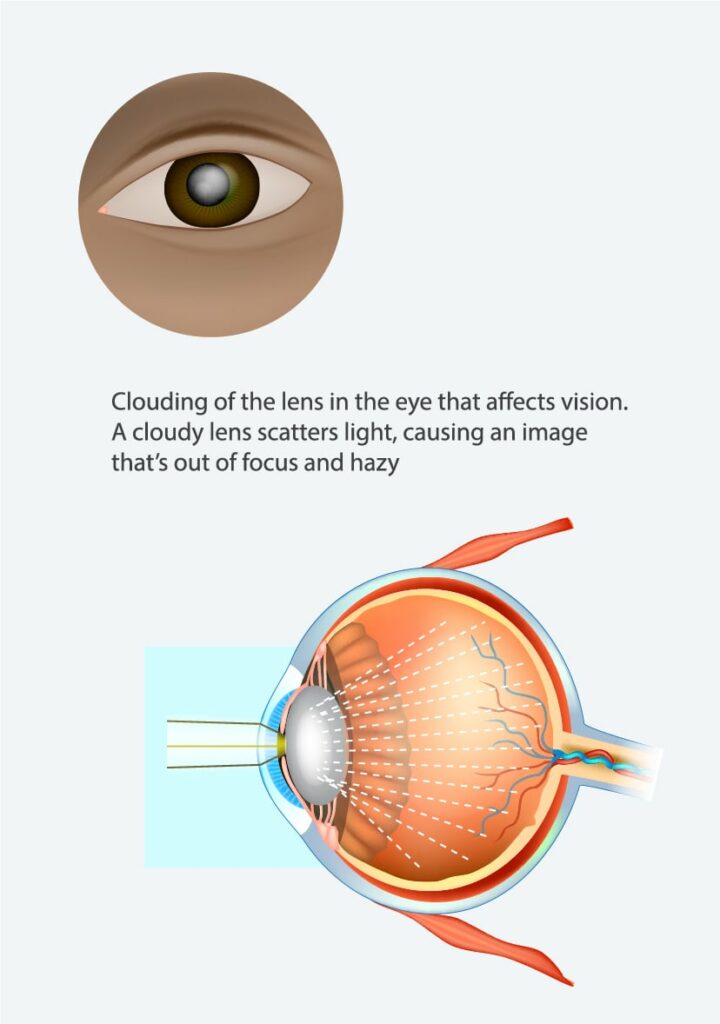
However, over time, the proteins in the lens may start to break down and clump together, causing the lens to become opaque and yellow, leading to cataracts.
Cataracts can develop slowly and painlessly over time, and they are most commonly caused by aging, exposure to UV radiation, smoking, and long-term use of certain medications. Other risk factors include diabetes, obesity, high blood pressure, and certain medical conditions that increase the risk of oxidative damage to the lens.
Symptoms of cataracts include:
Monofocal lens: this type of lens does not provide correction for near sightedness or astigmatism and corrects vision for only one distance- either far, intermittent or near. As a result, the patient will require glasses or contact lenses after the surgery for the best possible vision.
Multifocal lens provides correction for both distance vision and near vision simultaneously but does not correct astigmatism. The disadvantage however is it can cause more glare than the monofocal lens.
Premium intraocular multifocal lens, also called toric lens, provides correction for astigmatism as well as distance and near vision. The advantage of a toric lens is the patient usually does not require glasses or contact lenses for normal vision after the surgery.
Accommodative lens are very flexible and mimic the movements of the natural eye lens by changing its shape inside the eye. This allows the eye lens to easily accommodate the change in focus for close and distant objects.
After cataract surgery, most people experience a significant improvement in their vision, and they can usually return to normal activities within a few days. It’s important to have regular follow-up visits with your ophthalmologist to monitor your recovery and ensure that the artificial lens is functioning properly.
In conclusion, cataracts are a common age-related condition that can cause vision loss and blindness. Cataract surgery is a safe and effective procedure that can restore vision by removing the cloudy lens and replacing it with a clear artificial lens.
RPAH Medical Centre
Suite G8, 100 Carillon Avenue
Newtown, NSW, 2042
Monday to Friday
8:00am-5:00pm